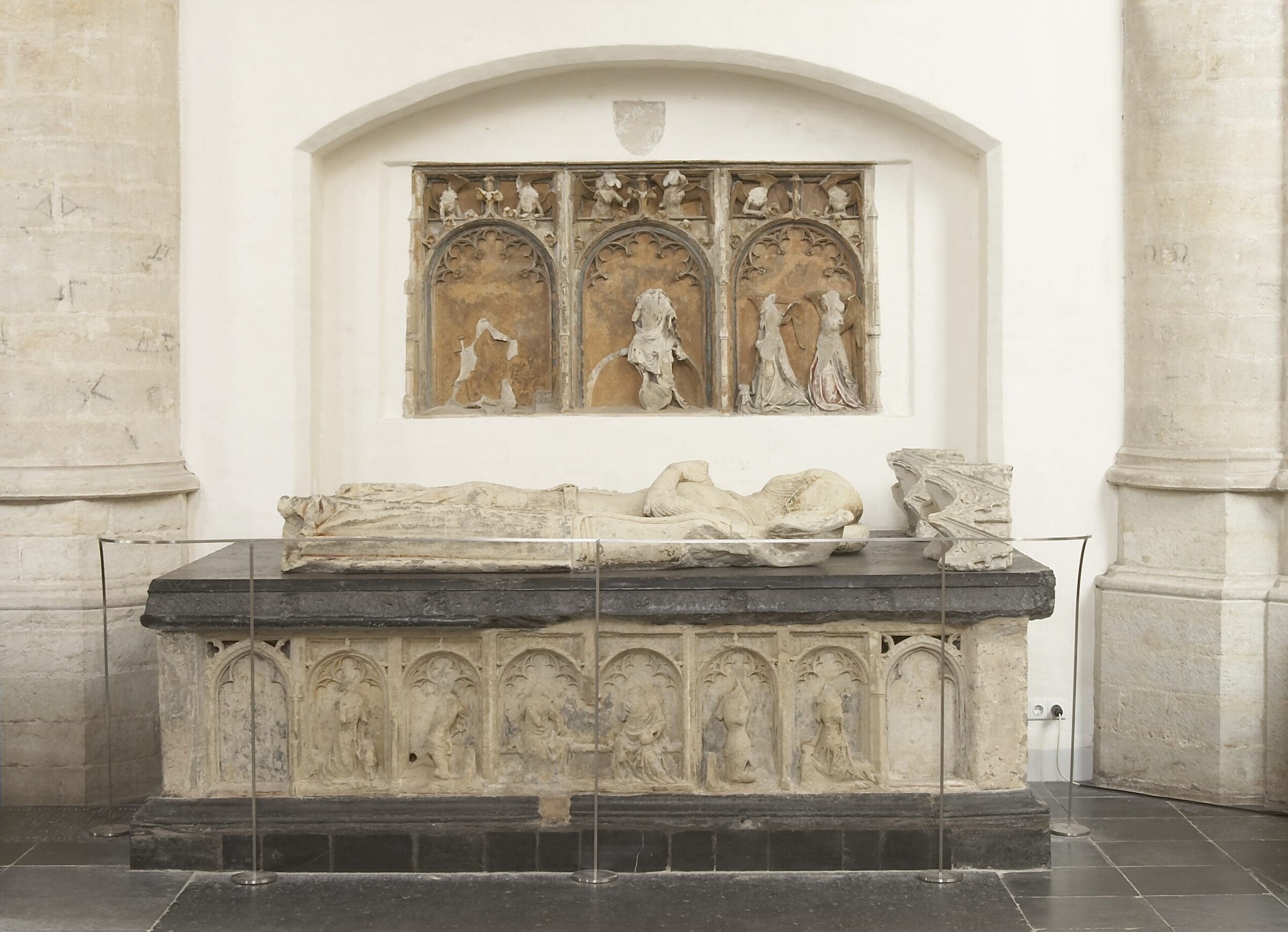Heyday
The Grote Kerk Breda as we know it today has its origins around the mid-14th century. Jan van Polanen I, a rich and influential man at the time, bought the seigniory of Breda. He planned to turn Breda into a real city. A huge project for the then small population. About five thousand people lived in Breda at the time. Under Jan van Polanen I, the Grote Kerk Breda became a stone church. Before that, it was a church made of tuff, and even further back probably a wooden church. His son, Jan van Polanen II, commissioned the construction of Breda Castle. What was the high point of this heyday? That took place for the church under the rule of Engelbert II of Nassau and Henry III of Nassau, both high officials at the Habsburg Court. After 1410, the church was gradually extended with a chancel, an ambulatory, a nave with side aisles and a transept to its current size.

Grafmonument Jan II van Polanen 14e eeuw






